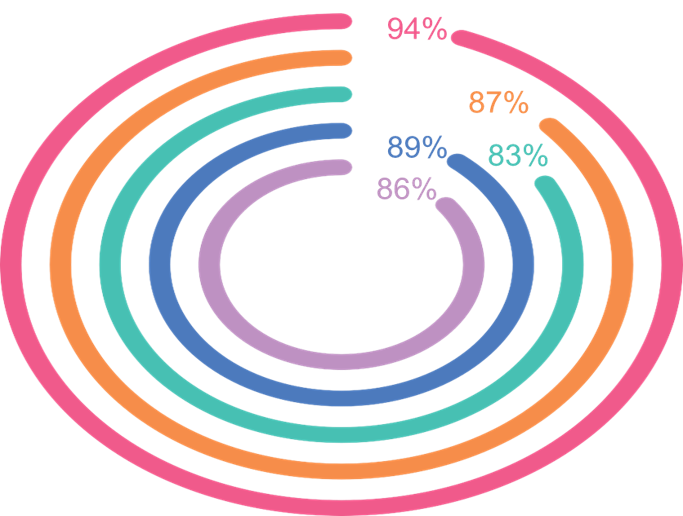
“CSR” you might say…what is that? I also thought it was a “Customer Service Rep” until learning that industry giants such as Google, Microsoft, Disney and even Lego engage in CSR for several reasons including improving employee morale, bettering the firms brand image, and benefiting the wider society.
“CSR” stands for Corporate Social Responsibility and should be a priority for businesses big and small. That’s not our opinion: 70% of Americans believe it’s either “somewhat” or “very important” for many companies to make the world a better place. It is a key consideration for business objectives, plus it is great for the community and its people.
Nationwide, we know that while 315,000 jobs were added in August, there are still 11,000 job openings and only 5,000 job applicants. This means talent acquisition must think “outside the box” as continually raising salaries and offering multiple five-figure signing bonuses can only last so long. Organizations looking to differentiate themselves in a competitive hiring market might want to take a second look at how CSR might be highly valuable in attracting and retaining the talent that is need in 2022.
In essence, Corporate Social Responsibility is a corporate strategy that looks at how the business can benefit the wider society. The process typically involves three components:
- Boost Employee Engagement and Morale
A company that is socially responsible can increase the engagement of its workforce. Increasingly, workers want to be part of something bigger than just their jobs. Post-Pandemic the results are clear: rather than just working for organizations, employees want to be to a part of something more meaningful.
Some firms have dedicated CSR teams that focus on events to help local charities. For instance, local sports or sponsored events may be supported as well as organizations in need. The aim is to get employees involved and feel like they are contributing to society, alongside the support of their employer.
Improved employee engagement and morale can also improve an organization’s bottom line as:
- Engaged employees have a 17% increase in productivity
- 21% of companies with engaged employees are more profitable
- 41% saw lower absenteeism
Not to mention the cost of disengaged employees, which can be between $450 and $550 billion annually
- Betterment of Society
Much of CSR is conducted through charities, whether that is assisting through manual labor or helping to fund the cause. Charities such as Cancer Research, the Salvation Army, or the Red Cross foundation, all benefit from CSR in some shape or form.
In turn, such charities receive the funding they need to help fight against cancer, help the homeless, and contribute to disaster relief. Some businesses are actively donating to good causes. For example, Amazon donated $3 million to the Center for Science and Innovation at Seattle University. The aim was to increase access to STEM and computer science education to women and other minorities.
Given that I am a voluntary benefits broker in Hawaii, the Hawaii State Charitable website shows over 8500 non-profits listed as “charitable organizations” with the state. The 2021 rankings released last year showed 51 Hawaii companies made a difference in 2020, donating more than $91 million, involving 125,000 volunteer hours by their employees, making a dramatic difference for the non-profits they serve.
To say that Hawaii is generous place, even in challenging times, is an understatement. Not only did First Hawaiian Bank top the list of giving (over $6.5 million in 2020), their culture of giving stands out. Each year, 98% to 99% of employees participate in First Hawaiian’s Kokua Mai giving campaign, and 2020 was no different, the bank says. The campaign raised a goal-breaking $876,342 to support charities in Hawai‘i, Guam and Saipan.

- Brand Image
Corporate Social Responsibility can play an important role in a brand’s image and reputation. For instance, a study shows that 62% of consumers worldwide want companies to take a stand on social issues.
CSR is so popular that according to KPMG, around 80% of companies publish an annual CSR report. That is a lot of companies, especially considering that this figure was at 12% in 1993, meaning this trend will continue as organizations strive for ways to distinguish themselves as “stewards of society” …not just merely employers.
As mentioned above, not only can CSR improve a company’s brand image, but it can also improve the bottom line. Given the Post-Pandemic challenges of recruiting and retention, organizations should lean into CSR to ensure it is part of your overall business objectives as:
- 83% of employees are more likely to stay with a company that helps them contribute
- 75% would choose to work for a socially responsible company for less money
- 74% of employees will consider a company’s CSR reputation before deciding where to work and overall and the big one:
How might CSR benefit your company? Let us look at a breakdown by percent of people who believe in CSR by generation:


What we clearly see here is if you have a younger workforce, they are not only keen on CSR, but they are also keen on employee benefit education.
How is CSR linked to benefits at the workplace? Organizations such as National Benefit Partners (NBP) have identified a way for organizations (small and large) to contribute to local children’s charities and hospitals when employees are educated on new voluntary benefits, which triggers a contribution to a children’s charity/hospital of their choice. Their program is called “Benefits that Benefit Children” (BTBC). Various carriers are listed in the benefit menu (Chubb, Symetra, Manhattan Life, AURA, etc.) with competitive employee-paid insurance benefits such as accident, critical illness, life, identity theft, etc.
This is an interesting concept: pairing corporate giving to a voluntary benefit offering. The program engages employees, weaving the charitable benefit into the education of new benefits. The program also shifts the enrollment process away from “selling” benefits to “educating” them for a good cause, which is the foundation for strong participation, with no purchase required.
Another benefit of this program is that it can include smaller organizations in on the giving. Corporate giving is typically reserved for larger organizations with deeper pockets. But in a program such as BTBC, smaller organizations can also get in the fun, benefiting from the free publicity while improving their benefits…all at no cost to their organization (state rules apply so check with your insurance division for programs such as this being allowed in your state).
Pairing CSR with employee-paid benefits is timely in the fight for talent as:
- LIMRA states more than a quarter of workers list non-medical insurance benefits as one of the TOP FIVE factors they consider when evaluating potential employers
- According to Principal Financial Group, 70% of business owners agree that employee benefits help to improve recruitment effort (thus the appeal to offering voluntary benefits at no cost as well as remaining competitive), but also
- 71% of business owners said offering more employee benefits helps to improve retention.
Programs that incentivize their employees to take small action to learn about benefits that can improve their financial security is a fabulous combination. It checks “all the boxes” from engagement, diversity, inclusion, education and more.
The program is also timely as many employers have pre-pandemic voluntary benefit programs still in place that may not have the bells and whistles that address the new needs of the workplace such as telemedicine, mental health and more. For many organizations, simply by upgrading their prior voluntary program itself can even engage employees, as what HR manager wouldn’t love to improve their program while giving the employees a raise with better benefits and lower premiums?
Regarding the post-pandemic workplace, a program such as this fits right in. It builds camaraderie with fully or partially remote workforces as employees do not have to meet face-to-face but can qualify through a one-on-one with call center rep. Another great idea is also to introduce the BTBC program “off-cycle” to a company’s traditional benefits open enrolment as a program such as this might be most effective when the focus is on the one-on-ones and the charity that is to receive the funds.
As I close this article, it’s worth noting that not only do for-profit companies such as First Hawaiian Bank make significant contributions to non-profits, in 2020, the largest contributor was Hawaii Foodbank, Inc. This nonprofit provides food to 287,000 residents in need in Hawaii, including nearly 53,000 keiki (children) and over 46,000 kūpuna (elderly).

FHB Foundation President Cameron Nekota with Hawaii Foodbank VP Laura Kay Rand.
Food insecurity in Hawai‘i jumped 50% in 2020, the nation’s fourth-largest increase. Hawaii Foodbank says it and its partners distributed 18.3 million pounds of food on O‘ahu and Kaua‘i, including more than 4 million pounds of fresh produce.
During the heat of the pandemic, to help in this mammoth effort, 7,828 volunteers donated 35,480 hours of service. At the start of the pandemic, as stay-at-home orders slowed donations, the food bank stepped up its purchases. From March through June 2020, the organization bought $4.6 million worth of food for distribution, compared to a typical year’s purchase of $400,000.
Some other figures to consider: In 2019, Hawaii Foodbank reported $32.2 million in revenue and $21.23 million in charitable giving to Hawaii Business Magazine. Those numbers exploded in 2020 to $49.71 million in revenue and $43.58 million in giving. I think this is an outstanding example of Aloha CSR: receiving AND giving back.
Think of outside-the-box solutions to improve your recruiting and retention with CSR as you never know, it just might be the component to attract that critical new hire or retain that key employee while improving the lives of children in need.
Pamela Whitfield, CVBS




